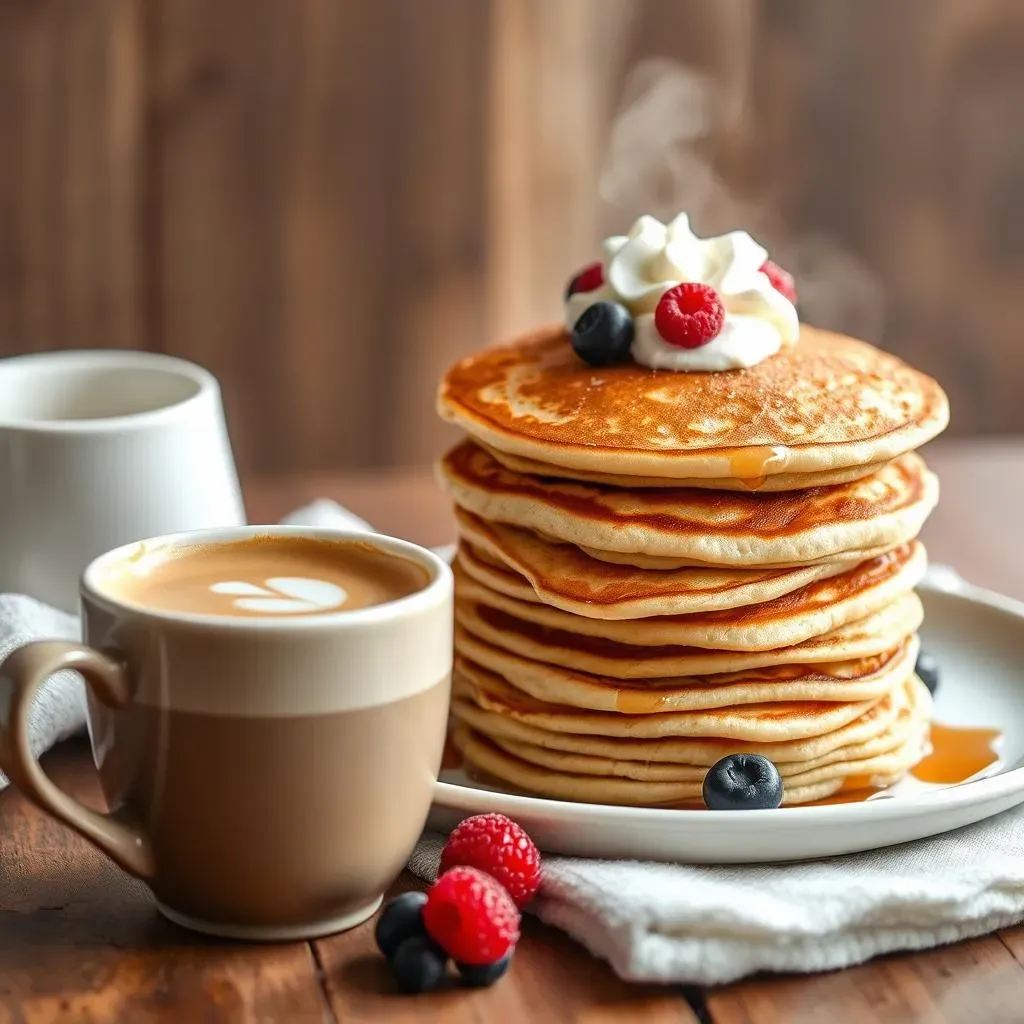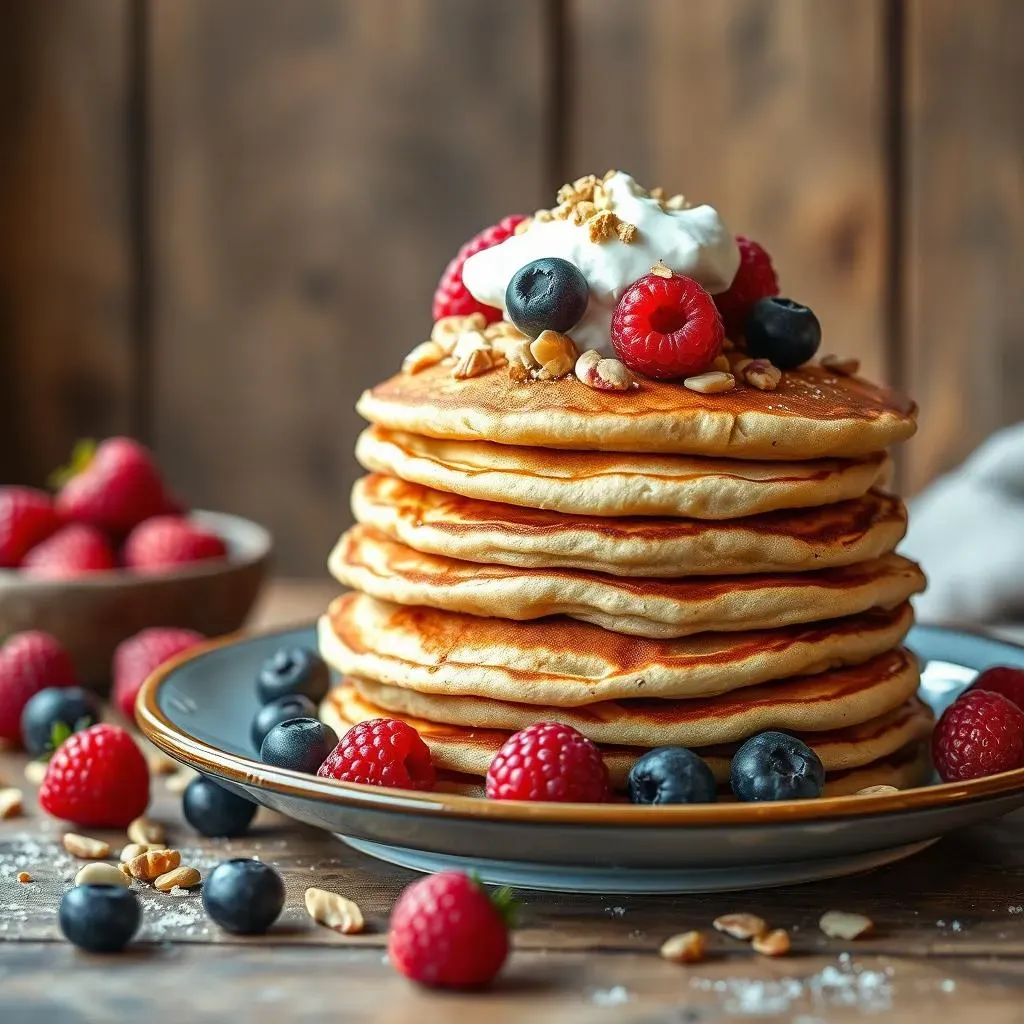Table of Contents
Are you someone who loves pancakes but also needs to keep an eye on your blood sugar? You're not alone! Many people with diabetes find it challenging to enjoy classic breakfast treats. The good news is that you don't have to say goodbye to fluffy, delicious pancakes. This article is your guide to navigating the world of a "pancake recipe for diabetics", offering a way to enjoy this breakfast staple without the worry of a blood sugar spike. We will explore why traditional pancake recipes can be problematic, and show you how to create a low-carb alternative that's just as satisfying. We’ll walk through a specific recipe, focusing on ingredients that are gentle on blood sugar, and offer practical tips to ensure your pancakes turn out perfect every time. Get ready to flip your way to a healthier and happier breakfast!
Understanding the Need for DiabeticFriendly Pancake Recipes

Understanding the Need for DiabeticFriendly Pancake Recipes
The Problem with Traditional Pancakes
let's be real, traditional pancakes are delicious. But, they're often loaded with refined flour and sugar. These ingredients can cause a rapid spike in blood sugar levels, which is exactly what people with diabetes are trying to avoid. It's like a rollercoaster for your glucose, and nobody wants that first thing in the morning. These spikes can lead to fatigue, increased thirst, and other unpleasant symptoms. Plus, over time, frequent blood sugar spikes can contribute to long-term health issues. So, while you might love that stack of fluffy pancakes, it's not the best choice for managing diabetes.
Think of it like this: regular pancakes are like a sugary rocket ship launching your blood sugar into space. For those managing diabetes, it's more like trying to keep a kite steady in a hurricane. We need something that's delicious but also keeps things on an even keel. That's where diabetic-friendly pancakes come into play. They are designed to be lower in carbs and higher in fiber, making them a much better option for anyone watching their glucose levels. It's about enjoying the things you love without compromising your health.
Issue | Why It's a Problem |
|---|---|
Refined Flour | Rapid blood sugar spikes |
High Sugar Content | Contributes to glucose instability |
Low Fiber | Doesn't promote satiety or stable blood sugar |
The Benefits of Diabetic-Friendly Alternatives
Now, let's talk about the good stuff! Diabetic-friendly pancakes aren't just about avoiding the bad stuff; they're about adding in the good. These recipes often use ingredients like almond flour, coconut flour, or oat flour, which are lower in carbohydrates and higher in fiber. Fiber is like the superhero of blood sugar control – it helps slow down the absorption of sugar, preventing those nasty spikes. It also keeps you feeling full for longer, which is a win-win.
These alternative recipes also often use natural sweeteners or sugar substitutes, so you can get that touch of sweetness without the blood sugar roller coaster. It's about finding balance, and enjoying your breakfast without feeling guilty or worried. Plus, experimenting with new recipes can be fun! You might even discover that you prefer the taste and texture of these healthier options. It's a great way to take control of your health and your breakfast plate. And who doesn't like to feel a little bit like a culinary scientist in the kitchen?
Crafting the Perfect LowCarb Pancake Recipe for Diabetics

Crafting the Perfect LowCarb Pancake Recipe for Diabetics
Choosing the Right Flour
let's get down to the nitty-gritty of making these pancakes. First, forget about regular wheat flour. It's a no-go for our low-carb mission. Instead, we're diving into the world of alternative flours. Almond flour is a fantastic option—it's low in carbs, high in healthy fats, and gives the pancakes a lovely, slightly nutty flavor. Coconut flour is another contender, but it's super absorbent, so you'll need to adjust the liquid ratio. Oat flour can also work, but make sure it's finely ground and be mindful of the carb count. Each flour brings something different to the party, so it's worth experimenting to see what you like best.
Think of it like choosing the right tool for a job. You wouldn't use a hammer to screw in a bolt, right? Similarly, you need the right flour to achieve those perfect low-carb pancakes. And don't be afraid to mix and match! A blend of almond and coconut flour can give you the best of both worlds: a good texture and a lower carb count. It’s all about finding the sweet spot for your taste and dietary needs.
Sweetening Without the Sugar Spike
Next up, let's talk sweeteners. Sugar is obviously out. We need something that gives us that sweetness without sending our blood sugar into orbit. There are some great sugar substitutes on the market, like erythritol, stevia, and monk fruit. These are all low-glycemic, meaning they won't cause a rapid increase in your blood sugar. It's like having your cake and eating it too – or in this case, having your pancake without the sugar crash. You can find these sweeteners in granulated or powdered form, and it's a good idea to start with a smaller amount and add more to taste. Remember, a little goes a long way!
It's like being a detective, searching for the perfect balance between sweetness and health. And hey, who doesn't love a good detective story? The key is to experiment and find what you enjoy. Taste as you go and don't be afraid to adjust the amount to your liking. We’re not aiming for bland pancakes, we’re aiming for delicious and diabetes-friendly pancakes.
Sweetener Type | Glycemic Impact | Flavor Profile |
|---|---|---|
Erythritol | Very low | Mild, slightly cooling |
Stevia | Very low | Very sweet, can have a slight aftertaste |
Monk Fruit | Very low | Sweet, with a fruity undertone |
Adding the Wet Ingredients
Now, let’s get to the wet ingredients. Eggs are crucial for binding everything together, and they add some protein which is always a good thing. For the liquid, unsweetened almond milk is a fantastic choice, it's low in carbs and calories. You can also use unsweetened coconut milk or even a splash of water if you’re in a pinch. A little bit of vanilla extract can add a lovely flavor, and a touch of melted butter or coconut oil can help with the texture. It's all about creating a batter that’s not too thick, not too thin, but just right. Think of it like Goldilocks, but for pancakes. You want a consistency that’s easy to pour but still holds its shape on the griddle. And remember, a pinch of salt helps to enhance all the other flavors.
It's like painting a masterpiece, you have to use the correct amount of water to make the paint flow and not be to tick or too watery. The right balance of wet ingredients is what makes a pancake batter sing. So don’t be afraid to experiment and adjust the liquid until it’s just right. You’re not just making pancakes, you are creating a culinary experience, one delicious bite at a time. And who knows, maybe you'll be the next pancake artist.
Tips and Tricks for Delicious Diabetic Pancake Success

Tips and Tricks for Delicious Diabetic Pancake Success
Mastering the Cooking Process
so you've got your batter ready, now it's time to cook. First things first, heat your non-stick pan or griddle over medium-low heat. This is crucial, you don't want to burn the pancakes before they're cooked through. Add a tiny bit of butter or coconut oil, just enough to lightly grease the surface. Pour your batter onto the hot pan, using about ¼ cup for each pancake. Now, here's the secret: patience! Let them cook for 3-5 minutes on the first side, or until bubbles start to appear and the edges look set. This is where you need to resist the urge to flip too early. Give them time to form a nice golden-brown crust.
Flipping can be tricky, especially with almond flour pancakes which can be a little delicate. Use a thin spatula to carefully slide under the pancake, and gently flip it over. Cook for another 1-2 minutes on the second side, until it's golden brown and cooked through. Don't press down on the pancake while cooking, it will make it dense. Remember, it's better to undercook slightly than to overcook and have dry pancakes. Remove them from the pan and place them on a wire rack to cool slightly, this prevents them from getting soggy. And there you have it, perfectly cooked diabetic-friendly pancakes, ready to be devoured!
Toppings and Serving Suggestions
So, you’ve nailed the pancake, but what about toppings? Well, the usual suspects like syrup and jam are often loaded with sugar. No worries, there are plenty of delicious low-sugar options. Fresh berries are an excellent choice, they are naturally sweet and packed with antioxidants. A dollop of unsweetened Greek yogurt adds creaminess and protein. You can also sprinkle some chopped nuts or seeds for added crunch and healthy fats. Sugar-free syrups are also available, just make sure they’re sweetened with a low-glycemic option like stevia or erythritol.
And if you're feeling adventurous, try adding a sprinkle of cinnamon or nutmeg to your pancakes. It's a great way to boost the flavor without adding sugar. Think of your toppings as the finishing touch on a masterpiece. They can elevate your pancakes from good to amazing. Don't be afraid to get creative and experiment with different combinations. The key is to make your breakfast something you look forward to, something that's both delicious and good for you. And remember, presentation matters! So, stack those pancakes high, arrange your toppings artfully, and enjoy every bite.
Topping Option | Why It's a Good Choice |
|---|---|
Fresh Berries | Low in sugar, high in antioxidants |
Unsweetened Greek Yogurt | High in protein, creamy texture |
Chopped Nuts or Seeds | Healthy fats, added crunch |
Sugar-Free Syrup | Sweetness without the sugar spike |
Your Diabetic-Friendly Pancake Journey Continues
So, there you have it – a delicious, low-carb pancake recipe designed with diabetics in mind. It's not about restriction; it's about finding smart swaps and enjoying the foods you love in a way that supports your health. Remember, experimenting with ingredients and finding what works best for your body is key. Don't be afraid to tweak the recipe, try different toppings, and make it your own. The most important thing is that you can enjoy a stack of pancakes without the guilt or the blood sugar rollercoaster. Breakfast should be a joy, and with this recipe, it can be. Keep exploring, keep cooking, and keep enjoying the simple pleasures in life.